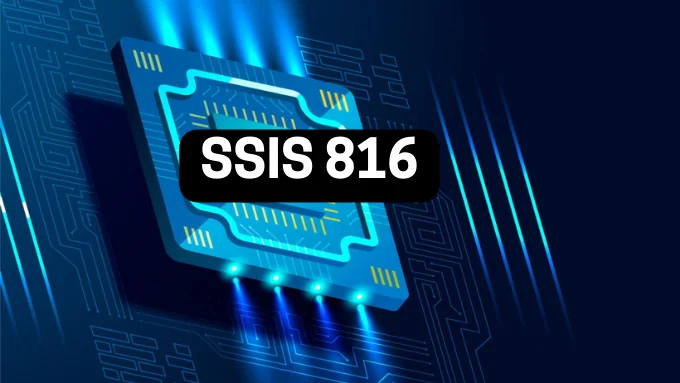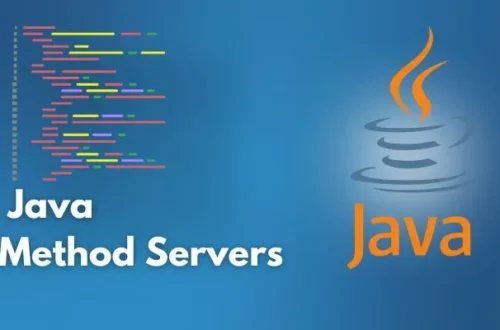Introduction
In today’s fast-paced digital world, data plays a crucial role in business success. Organizations need efficient ways to manage, transform, and transfer data seamlessly. SSIS-816, a feature of SQL Server Integration Services (SSIS), helps businesses streamline their ETL processes, automate data workflows, and improve integration efficiency.
This article explores SSIS-816, its importance in data integration, how it enhances ETL automation, and best practices for its implementation.

What is SSIS-816?
This is an advanced SQL Server Integration Services (SSIS) component designed for handling data integration efficiently. It allows businesses to extract, transform, and load (ETL) data from various sources, making it an essential tool for database management and business intelligence.
Key Features of SSIS-816
- Data Extraction: Supports multiple data sources, including SQL databases, flat files, and cloud storage.
- Data Transformation: Cleans, modifies, and processes raw data before loading it into the destination system.
- Automation Capabilities: Reduces manual effort in data handling by scheduling and automating workflows.
- Performance Optimization: Enhances ETL pipeline efficiency through caching and parallel processing.
- Error Handling and Debugging: Ensures smooth data flow with built-in error-handling mechanisms.
Why is SSIS-816 Important for Data Integration?
Businesses deal with vast amounts of data daily. Managing this data manually can lead to errors, inefficiencies, and high operational costs. SSIS-816 simplifies data integration by offering a structured approach to ETL processes, ensuring consistency and accuracy.
Benefits of Using SSIS-816
- Improved Data Quality: Automates cleansing and validation processes.
- Enhanced Performance: Optimized execution of data transformation tasks.
- Scalability: Adapts to growing data needs with minimal changes.
- Cost-Efficiency: Reduces operational costs by automating repetitive tasks.
How SSIS-816 Works in ETL Processes
The ETL process is fundamental in data integration. SSIS-816 follows a structured workflow to manage data extraction, transformation, and loading efficiently.
Step-by-Step ETL Process in SQL Server Integration Services3
- Extract Data: Retrieves data from diverse sources such as databases, APIs, and spreadsheets.
- Transform Data: Cleans, formats, and enriches data for better usability.
- Load Data: Transfers the processed data to a target database or data warehouse.
This structured process ensures that businesses can integrate data efficiently while maintaining high standards of data governance.
Best Practices for Implementing SSIS-816
To maximize the potential of SSIS-816, businesses should follow best practices in its implementation.
1. Optimize SSIS Package Performance
- Use parallel processing to speed up execution.
- Implement data flow buffering to minimize memory usage.
- Utilize incremental data loading instead of full refreshes.
2. Improve Data Quality with Validation
- Apply data cleansing techniques to remove duplicates and inconsistencies.
- Use data validation rules to maintain accuracy.
- Implement error-handling mechanisms for unexpected data issues.
3. Automate and Schedule Workflows
- Set up job scheduling to reduce manual effort.
- Use event-driven triggers for ETL automation.
- Monitor logs to identify and resolve issues proactively.
4. Enhance Security in SSIS-816
- Use encryption and authentication for secure data transfer.
- Limit access to SQL Server Integration Services package configurations.
- Regularly audit SSIS processes to detect vulnerabilities.
Common Challenges in SSIS-816 and How to Overcome Them
While SQL Server Integration Services is powerful, users may face challenges in its implementation. Here are some common issues and solutions:
1. Performance Bottlenecks
- Issue: Slow execution due to large data loads.
- Solution: Optimize ETL pipeline, implement parallel processing, and use data caching.
2. Connection Failures
- Issue: Data source connectivity issues disrupt the process.
- Solution: Implement retry mechanisms and validate connection configurations.
3. Data Transformation Errors
- Issue: Inconsistent data formats lead to processing failures.
- Solution: Use data validation techniques before loading data.
Future of SSIS-816 in Data Integration
With the rise of cloud computing and big data, SQL Server Integration Services continues to evolve. New enhancements focus on cloud integration, AI-driven automation, and real-time data processing. Businesses should stay updated with the latest SQL Server Integration Services features to leverage its full potential.
Conclusion
SQL Server Integration Services is a game-changer in data integration, enabling businesses to manage ETL processes efficiently. By implementing best practices, optimizing performance, and leveraging automation, organizations can maximize the benefits of SSIS-816.
Embracing this tool will lead to improved data transformation, better business intelligence, and cost-effective data automation solutions.
Key Takeaways:
- it simplifies ETL automation and data integration.
- Best practices help optimize SSIS package performance.
- Overcoming challenges ensures seamless data transformation.
- Its future is in cloud integration and AI automation.
Explore more at futurefinancevision.com





